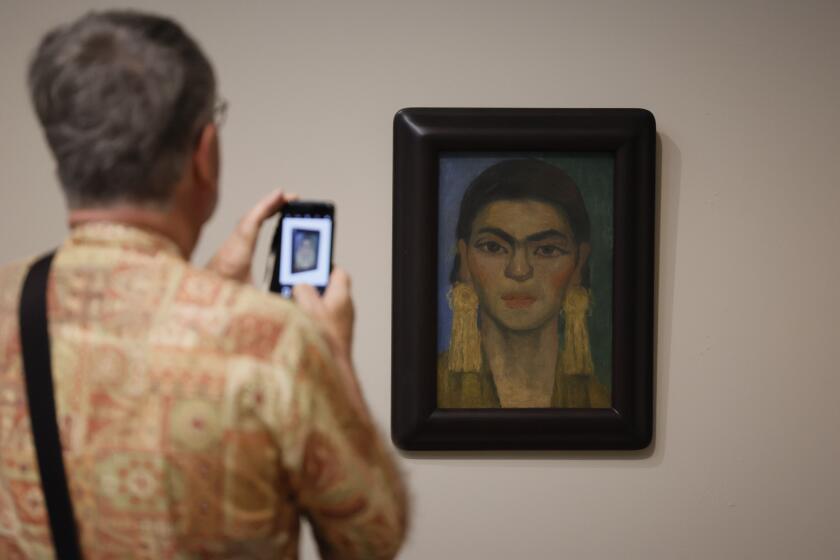Critic blasts Sistine Chapel’s ‘drunk cattle’
On Wednesday the Vatican celebrated the 500th anniversary of Michelangelo’s completion of the ceiling frescoes in the Sistine Chapel, an epic extravaganza of painting that the artist, who considered himself a sculptor first, undertook only grudgingly in 1508. Pope Benedict XVI marked the occasion with the celebration of Vespers, replicating the event on the eve of All Saints’ Day in which Pope Julius II first unveiled the masterwork.
Michelangelo wouldn’t begin the end wall’s powerful exegesis on “The Last Judgment” for another 24 years. Yet, in the spirit of that even more remarkable painting, which shows a muscular Christ in a limpid blue heaven dramatically saving and condemning earthly souls for all eternity, the word “hellish” best describes visiting the Sistine Chapel these days.
According to the Vatican, upwards of 20,000 people now jam into the relatively small room on a given day. Coincidentally having been there about two weeks ago, my fourth visit to the site, I can attest that the cheek-by-jowl crowds make for a nearly impossible viewing experience.
Sistine Chapel logistics have never been easy. It takes a good bit of time to see all nine scenes from Genesis, while looking up in awe of course hampers movement. Along with the crush, add in the new habit of visitors holding iPads and other tablet devices aloft to take photographs or make videos to show the folks back home that they got into the celebrated room, and most good reasons to visit the masterpiece disappear.
There’s also the little issue that, simply by the fact of being there, the huge crowds may be damaging the frescoes -- including those painted on side walls by Perugino, Botticelli and Ghirlandaio. Humidity and pollution, not vandalism or time’s passage, are the biggest threats to art. Cram 5 million perspiring bodies plus 10 million dusty shoes every year into a 5,900 square-foot space built in the Middle Ages, and you can safely bet that the effects will be deleterious.
The worry has been building since 1994, when a controversial and highly publicized cleaning of Michelangelo’s famous frescoes was completed. Last month the concern finally exploded into popular consciousness. Pietro Citati, a respected Italian literary critic (he’s also written biographies of Goethe, Kafka and Marcel Proust), publicly denounced the Sistine’s visiting hordes as resembling “drunk cattle.”
Citati hadn’t been to the Sistine for some years, but what he witnessed on a recent visit shocked and dismayed him. “In the universal confusion no one saw anything,” he wrote in a tart letter to Vatican Museums director Antonio Paolucci. With guards in what is, after all, a sacred space shouting for silence at the top of their lungs every 10 minutes or so, things have gotten almost surrealistically out of hand.
Citati’s missive was posted in the Corriere della Sera, Italy’s most prominent newspaper, where the author is a longtime contributor. It insisted that the “monstrous condition” in the chapel could not be allowed to continue.
Citati is right. The situation is lose-lose. What good is an incomparable masterpiece that can’t be contemplated or enjoyed, even as it’s inevitably being damaged?
Will circumstances change? As always, money might be the biggest hurdle to overcome.
Cultural tourism is big business -- and nowhere more than in Italy. Full admission of 15 euros per adult gets a visitor into all the (very crowded) Vatican Museums, including the great classical antiquities collections, Raphael’s magnificently decorated Stanze, the Etruscan and Egyptian Museums and more. Busy souvenir shops pop up everywhere.
But the Sistine is the site’s big draw. The Vatican City cash cow generates many tens of millions of dollars in revenue for the church every year. And that’s a last judgment difficult to ignore.
More to Read
The biggest entertainment stories
Get our big stories about Hollywood, film, television, music, arts, culture and more right in your inbox as soon as they publish.
You may occasionally receive promotional content from the Los Angeles Times.







